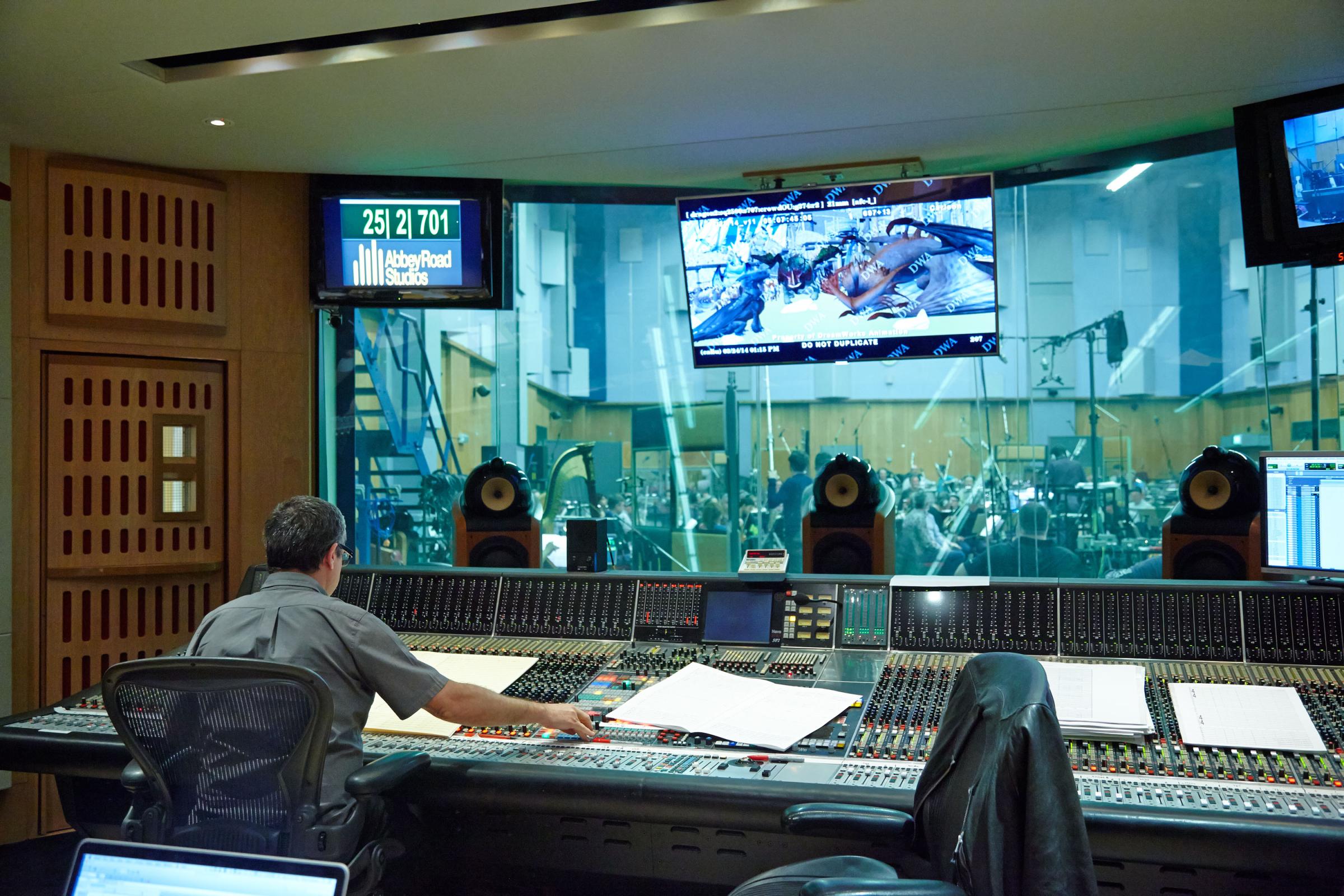It’s been four years since How to Train Your Dragon flew into theaters and charmed audiences with its gravity-defying cinematography. The sequel, opening Friday, picks up five years after the first film left off. The kids — and, okay, their parents and everyone else who fell in love with the coming of age story starring man’s best scaly friend — are now several years older, so the characters have aged to match. But composer John Powell grappled with an entirely different mission while working on the sequel: How do you make a movie sound older?
“This is a mature film,” says Powell, whose work on the first Dragon movie earned him an Academy Award nomination for best original score. “However, it cannot be Lord of the Rings!”
It’s a bit of a juggling act. Powell’s newest score builds off the critically acclaimed sounds of his first, but it’s moodier and relies more on traditional orchestral to better reflect the more grown-up challenges faced by Hiccup (voiced by Jay Baruchel) and his dragon Toothless this time around. To add some levity to the darkness, he made sure the more serious characters — such as the tellingly named Viking leader Stoick (Gerard Butler) — “could break out in dance at any moment” while his score played, but he also couldn’t get too cartoonish and over-the-top lest the soundtrack become distraction.
“It’s like plate-spinning — you’re really pushing on different parts of the story simultaneously,” Powell says. “If I push too hard on certain moments, it won’t feel right. That’s when you feel the composer is pushing you, rather than pulling you. I believe it’s my job to be slightly behind your emotion as a viewer, never in front of it.”

Powell had some help keeping it playful: How to Train Your Dragon 2 reunites him with Jónsi of Sigur Rós fame, whose track record of creating atmospheric soundscapes with the most famous Icelandic band that isn’t Björk made him a natural fit for the movie. “We called it play dates,” Powell says. “He’d come over, and we’d just play around and chat and listen to things. When people are musical, you put a couple of them in a room together, and they’ll make some music. It doesn’t matter where you’re from or how different you are — you’ll make music.”
In addition to working on the movie’s sole sing-along number, which features the vocals of Butler and Craig Ferguson, Jónsi also reworked a few of Powell’s themes from the first score to give the film a fresh but familiar feel befitting the grown-up sequel. “It was like him and me having a baby,” Powell says. “It was exactly between our two musical natures.”
Because the How to Train Your Dragon movies follow a band of Vikings, Powell incorporated instruments with roots in Northern Europe, such as the Highland pipes, which were used as an instrument of war to frighten approaching armies and were thus perfect for foreshadowing the movie’s dramatic turns. But much of what audiences think of as “Viking music” is an invention of Hollywood, not history. “The way we associate certain sounds with cultures is a learned thing, and often it’s not necessarily the truth,” Powell says. “What we think of as Norse music and British Isle music, all these folk traditions are completely up for grabs. You have bagpipes in every part of the world. You have bagpipes in Afghanistan. It’s just a very common pipe.”

The looks of animated films like How to Train Your Dragon 2 are planned far in advance, so Powell already has access to storyboards and concept art by the time he comes aboard the process and starts deciding on arrangements. But while he can peruse all the source material he needs for inspiration, Powell says seeing the film on the big screen for the first time can still be a bit of a shock. “When I was at Cannes watching the premiere, I remember thinking, that would have been a lot easier if I had known it was going to look like that!” he says. “There’s still no way of completely foreshadowing just how beautiful these scenes are because we often see them in just a slightly incomplete form.”
That can be a particular challenge considering the first film earned praise for its stellar use of 3-D, which made the airborne scenes all the more immersive — but which isn’t available for Powell to see himself until the movie hits theaters. Bringing audiences’ imaginations to life on screen requires, well, a lot of imagination on Powell’s part.
“The flying scenes in the first movie were significant in their visual language and had so much joy in them,” he says. “If you’re trying to evoke the joy of flying, you just try and make it as wonderful-sounding as possible in a way you’d imagine it would feel to fly. It’s that simple. I knew I had to deliver music that was as good as the film as I was fitting it to.”
More Must-Reads from TIME
- Donald Trump Is TIME's 2024 Person of the Year
- Why We Chose Trump as Person of the Year
- Is Intermittent Fasting Good or Bad for You?
- The 100 Must-Read Books of 2024
- The 20 Best Christmas TV Episodes
- Column: If Optimism Feels Ridiculous Now, Try Hope
- The Future of Climate Action Is Trade Policy
- Merle Bombardieri Is Helping People Make the Baby Decision
Write to Nolan Feeney at nolan.feeney@time.com